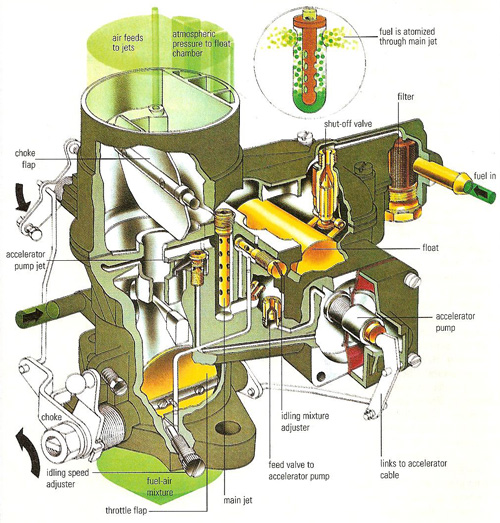Since the inception of the internal combustion engine, the carburetor has played a pivotal role in automotive engineering. Companies such as the renowned Lanzoni Carburatori have been instrumental in supplying and refining these essential components. This article delves into the history, technological advancements, and the eventual decline of carburetors in favor of modern fuel injection systems.
The Birth of the Carburetor
The carburetor’s invention is attributed to Italian engineer Luigi De Cristoforis in 1876. His pioneering work laid the foundation for mixing air and fuel in appropriate ratios for combustion engines. Shortly after, in 1882, Enrico Bernardi developed a carburetor for the “Motrice Pia,” marking one of the earliest applications of this technology in internal combustion engines.
Early Innovations and Manufacturers
Founded in 1906 by Maurice Goudard and Marcel Mennesson, Solex initially focused on manufacturing radiators. However, by 1910, the company shifted its attention to carburetors, a move that would define its legacy in the automotive industry. Solex carburetors became renowned for their reliability and were widely adopted by major automobile manufacturers throughout Europe.

Weber: Precision Engineering from Bologna
In 1923, Edoardo Weber established the Fabbrica Italiana Carburatori Weber in Bologna. Weber’s innovations included the development of the double-barrel carburetor, which allowed for improved engine performance by providing a more precise air-fuel mixture. This advancement made Weber carburetors a preferred choice for high-performance vehicles and racing cars.
Dell’Orto: A Family Legacy
The Dell’Orto company was founded in 1933 in Seregno by Luigi, Piero, and Giuseppe Dell’Orto. Initially producing carburetors for motorcycles, Dell’Orto expanded into the automotive sector, supplying major manufacturers like Alfa Romeo and Ford. Their commitment to quality and innovation solidified their reputation in the industry.
The Golden Age of Carburetors
During the mid-20th century, carburetors were the standard for fuel delivery in both automobiles and motorcycles. Manufacturers continuously refined designs to enhance performance, fuel efficiency, and reliability. The widespread adoption of carburetors facilitated the mass production of vehicles, contributing significantly to the global expansion of the automotive industry.
Technological Advancements
Despite their dominance, carburetors began to face competition from fuel injection systems in the latter half of the 20th century. Fuel injection offered more precise control over the air-fuel mixture, leading to improved efficiency and reduced emissions. By the 1990s, fuel injection systems had largely supplanted carburetors in new vehicle models.
Legacy and Continued Use
While modern vehicles predominantly use fuel injection, carburetors remain in use for certain applications. Classic car enthusiasts and restorers often seek original carburetor parts to maintain the authenticity of vintage vehicles. Companies specializing in carburetor parts and restoration continue to serve this niche market, ensuring that the legacy of carburetors endures.
Conclusion
The carburetor has played a crucial role in the evolution of automotive engineering, from its invention in the late 19th century to its widespread use throughout the 20th century. Innovations by companies like Solex, Weber, and Dell’Orto have left an indelible mark on the industry. Although largely replaced by fuel injection systems, the carburetor’s legacy persists, celebrated by automotive enthusiasts and preserved by dedicated specialists.